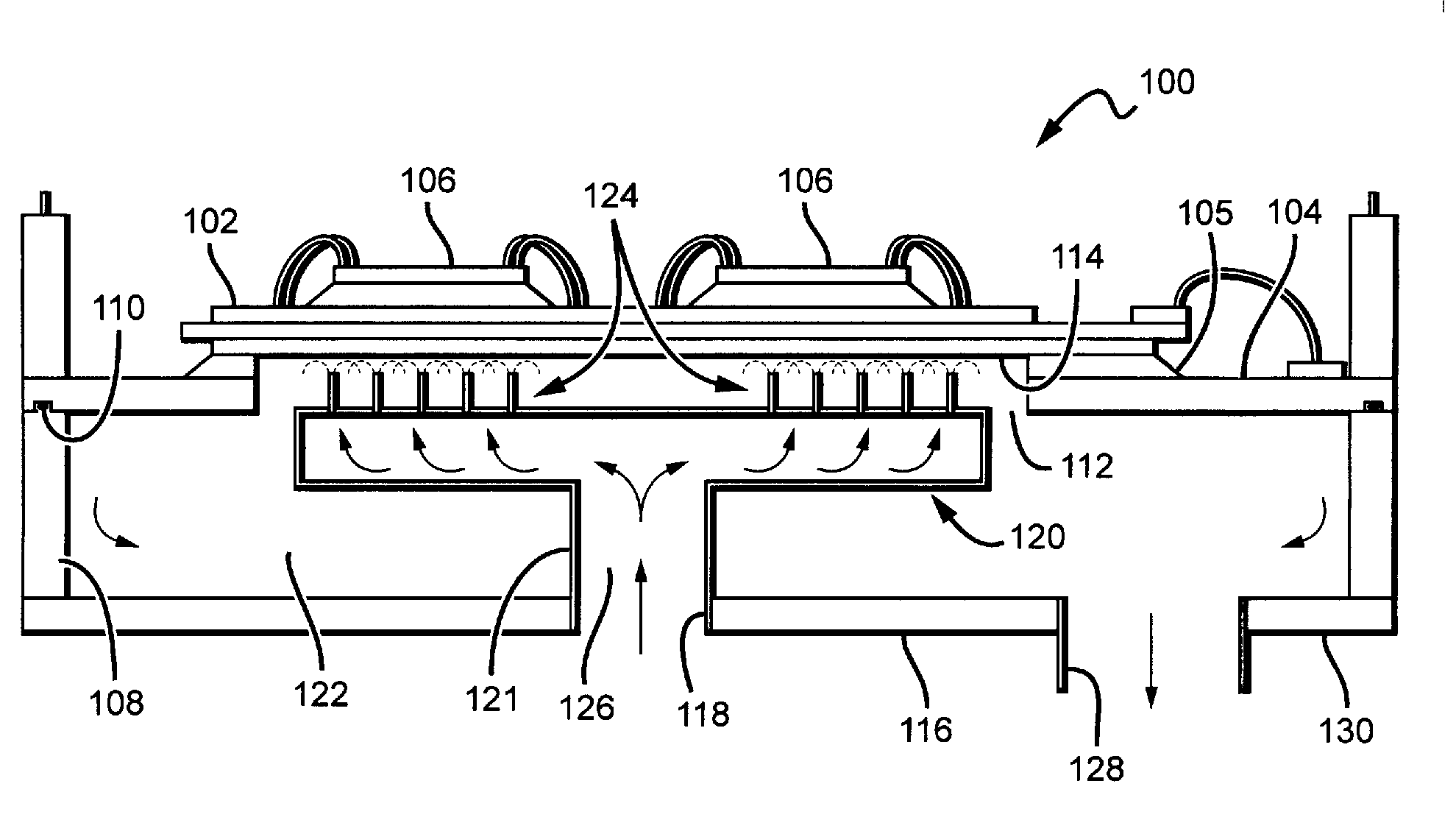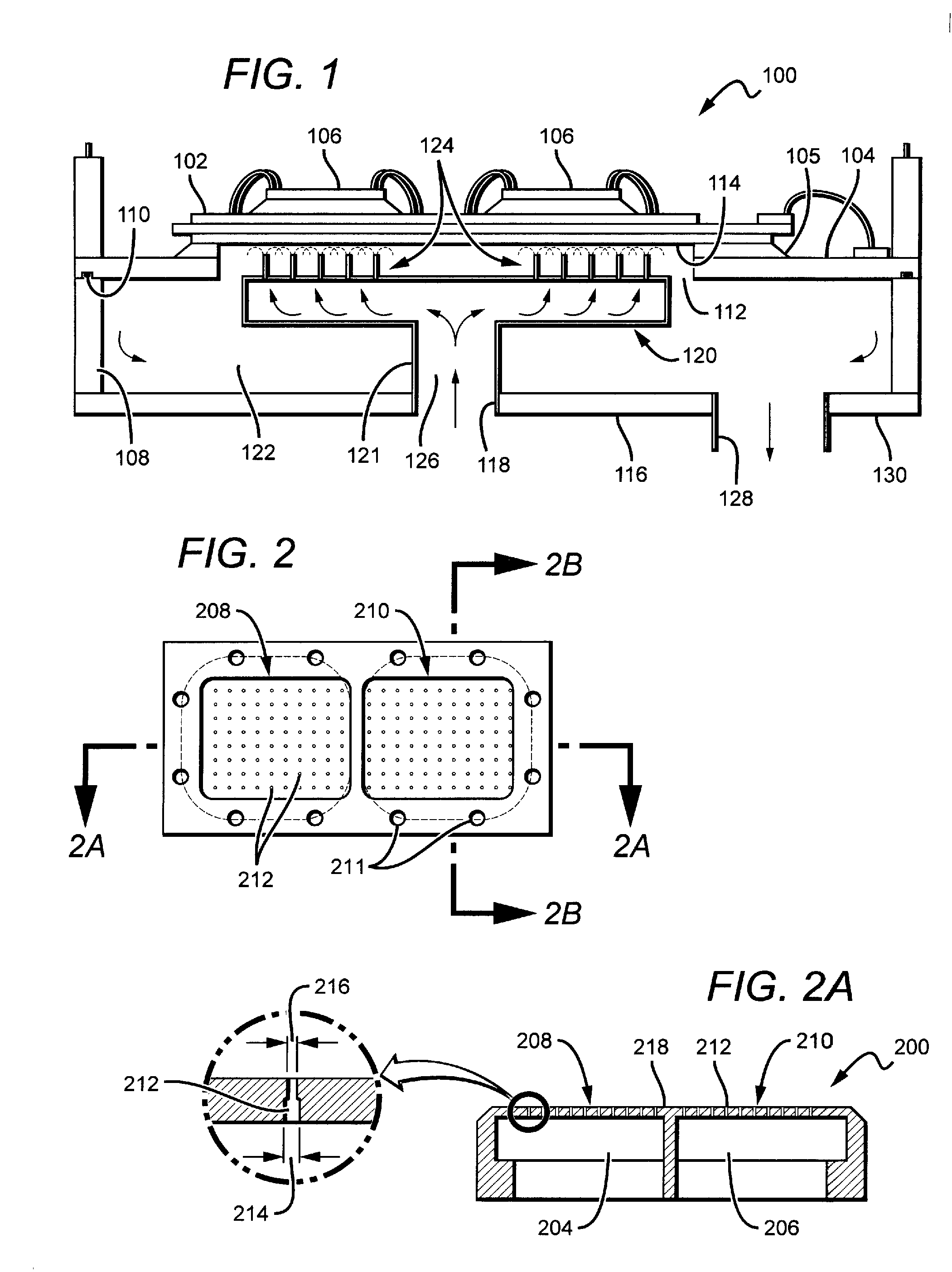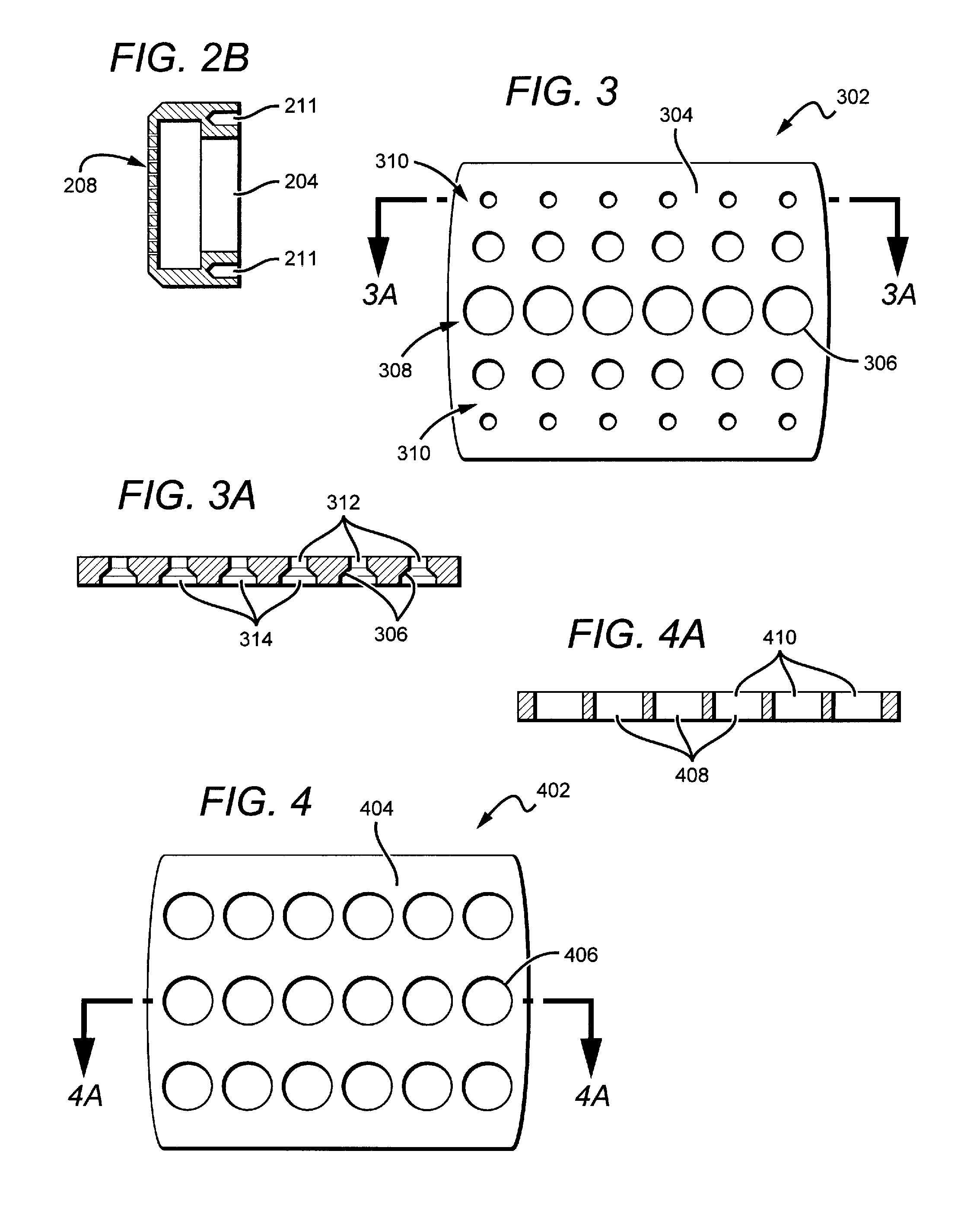High Power Module Cooling System
- Summary
- Abstract
- Description
- Claims
- Application Information
AI Technical Summary
Benefits of technology
Problems solved by technology
Method used
Image
Examples
Embodiment Construction
[0018]FIG. 1 illustrates one embodiment of a light-weight and compact high-power module cooling system 100 conformal to high power devices sitting on a substrate, with the high power devices and substrate collectively defining a “high power module.” The cooling system uses a phase-change material, preferably a liquid to enable a micro-jet / droplet based spray cooling, in a low thermal resistance packaging architecture. The phase-change material is preferably water, but may be a dielectric liquid, a water and ethalene glycol (WEG) mixture or consist of a microencapsulated phase change material such as tetradecane or octadecane. A micro-structured direct bonded copper (“DBC”) substrate 102 is thermally coupled to a module base plate 104, preferably a metal base plate formed of aluminum, aluminum silicon carbide or copper, for support and heat transfer. The DBC substrate 102 is thermally coupled to the module base plate 104 using a solder 105 such as SiIn or AuSn, or may be thermally co...
PUM
 Login to View More
Login to View More Abstract
Description
Claims
Application Information
 Login to View More
Login to View More - R&D
- Intellectual Property
- Life Sciences
- Materials
- Tech Scout
- Unparalleled Data Quality
- Higher Quality Content
- 60% Fewer Hallucinations
Browse by: Latest US Patents, China's latest patents, Technical Efficacy Thesaurus, Application Domain, Technology Topic, Popular Technical Reports.
© 2025 PatSnap. All rights reserved.Legal|Privacy policy|Modern Slavery Act Transparency Statement|Sitemap|About US| Contact US: help@patsnap.com



